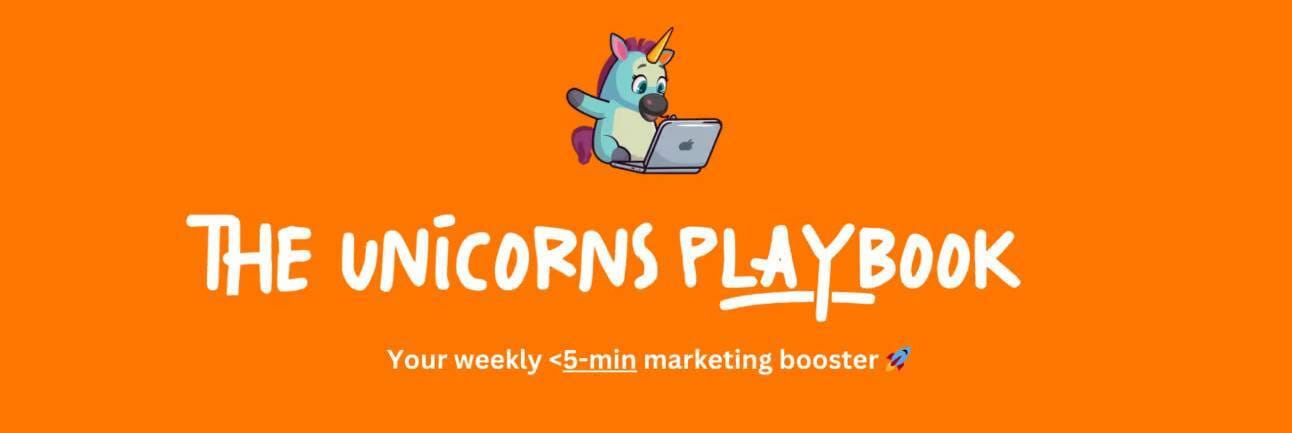- The Unicorns Playbook
- Posts
- 🦄 The Zero Risk Growth Strategy & Quiz Results
🦄 The Zero Risk Growth Strategy & Quiz Results
Smart Marketing in 5 minutes!

Smart Marketing in 5 minutes!
Hey unicorns! 👋
This week, we're exploring how SaaS founders can turn their best users into revenue engines with Affiliate Marketing 2.0.
It's how ConvertKit grew to $30M ARR without a sales team.
And yes, you can start with just 5-10 power users.
Plus, solve this week's growth puzzle:
Why do some subtle "Focus Mode" buttons drive 2.5x more completions, yet 92% of users never notice them?
(Only 11% got this right 🤓)
Let's get to it
Sponsored By Rundown AI
Start learning AI in 2025
Everyone talks about AI, but no one has the time to learn it. So, we found the easiest way to learn AI in as little time as possible: The Rundown AI.
It's a free AI newsletter that keeps you up-to-date on the latest AI news, and teaches you how to apply it in just 5 minutes a day.
Plus, complete the quiz after signing up and they’ll recommend the best AI tools, guides, and courses – tailored to your needs.
Weekly Growth Strategy
🚀 Affiliate Growth: How Technical Founders Build Self-Growing Revenue Engines

What is it?
Affiliate marketing is about turning customers and industry peers into revenue partners.
They promote your product through tracked links and earn commission on sales they drive.
Why it works?
Perfect incentive alignment - partners only earn when you earn.
While ads need constant spend, and content marketing needs months, affiliate partnerships drive predictable revenue from day one without any major upfront costs.
The numbers tell the story:
2-3x higher conversion vs paid ads
Zero upfront costs (you pay for results only)
10-15% longer customer retention
Built-in social proof from partners
Compound growth over time
Real Growth Example
🦄 ConvertKit ($30M ARR)
Built growth through 30% recurring revenue share with creator partners.
Now drives 50%+ of new customers through affiliates.
How to use it:
Design Your Program: Consider your affiliate program terms, e.g., % commission, days of cookies, payout frequency, etc.
Build Your Tech Stack: Use tools like FirstPromoter/PartnerStack for tracking. There is no need to build something from scratch. There are many affordable platforms there.
Launch Small: Start with 5-10 power users as early partners who love your product and have an audience.
Expand Network: This is the most challenging part. Onboard people like small influencers, content creators, review sites, and affiliate forums. (We have a step-by-step process in the blog post)
Keep Partners Active: Run competitions, tiered commissions, and build a partner community.
The Growth Loop
Partners promote through tracked links
New customers sign up, generating commissions
Use these $$ to attract more partners
Existing customers become affiliates
Network grows exponentially 🔄
Ready to build your partner army?
Brain Teaser Answer
📝 Answer to Last Week’s Quiz
✨ Marketing Quiz Answer Revealed!
The best solution is:
Create contextual moments where Focus Mode naturally draws attention
Here's why this wins using Inattentional Blindness principles:
Why This Works:
Appears when users are most likely to need it (during complex design work)
Integrates into natural workflow moments
Respects users' attention instead of demanding it
Creates "attention bridges" between different work modes
Why Other Options Fall Short:
❌ Making the button larger and more colorful:
Simply making something more visible doesn't overcome Inattentional Blindness
Users focused on their design work will still filter out UI elements they're not looking for
Adds visual noise without solving the core attention problem
❌ Adding to main toolbar:
More visibility doesn't equal more attention when users are focused elsewhere
Could contribute to toolbar crowding and decision fatigue
Misses the opportunity for contextual relevance
❌ Adding an onboarding tutorial:
Information shown before users need it is often forgotten
Users are typically too focused on getting started to retain feature details
Doesn't solve the long-term discovery problem
Real-world validation:
This approach mirrors successful implementations by apps like:
Bear's format menu that appears when you select text
Figma's component suggestions that show up while you're designing
Notion's formatting options that emerge when you start typing
The bigger lesson:
When dealing with Inattentional Blindness, timing and context matter more than visibility. It's not about making features more noticeable – it's about presenting them at moments when users are mentally ready to notice them.
Stay tuned for next Thursday's brain teaser! 🧠
Tell us, how did this email land for you? |

